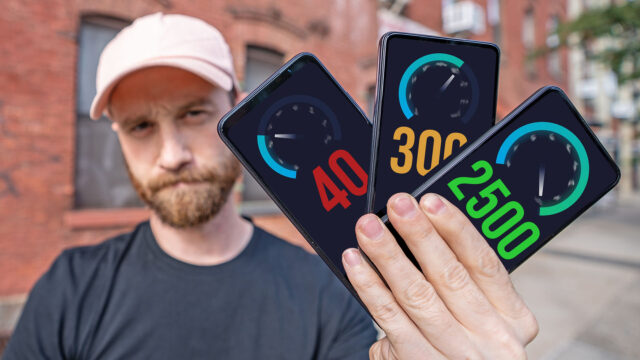Razer Blade 15 2020 Complete Walkthrough: They Finally Fixed It
Razer updates their laptops a lot honestly. Usually, it’s a new processor or a new display and some other minor bump in specs but this time, oh, this time, it feels like they took all of the criticisms myself and others have been giving their lineup and went, “OK. We’ll fix it all.”
And well Razer sent over a Blade 15 to borrow for review and so let’s talk about what they changed and how it’ll effect you in this complete walkthrough.
If you aren’t familiar a complete walkthrough on this channel is where I try and go through every single feature I possibly can on a new device so you guys are better prepared should you be in the market to actually go buy one. With that said, there is a lot to go through so let’s get started with the hardware.
Firstly, there are two distinct versions of the Razer Blade 15. We have the base model which is the less expensive lower spec’d model (but still very much a gaming PC) and then we have the more powerful, higher spec’d, more expensive Advanced Model, both with multiple sets of SKUs/configurations. Here though, we’ll be focusing on the Advanced Model since it’s the one I think you guys care more about and the one I myself would be more interested in buying right now.
With that said, this is the new Razer Blade Advanced 2020 model. And design-wise, it sports the same boxy-design language that Razer updated their Blade laptops to not too long ago (that I like) and we have the same CNC-milled aluminum body that is one of the reasons I think so many people have always gravitated towards the Blade laptops–they just feel more premium than most Windows laptops (although that has definitely changed over the last few years and Razer is getting more and more competition in that aspect).
The dimensions are identical to the last model and the weight is about the same 4.7 lbs.

Also here on the back we have the unmistakable three-headed snake logo that is a green LED that you can control from the included Razer Synapse app to have it on or off or have a breathing effect as well.
The screen on this generation is now available in two versions. We have a 300hz FHD non-touch screen display and a 4K OLED touchscreen. I have the 300hz model here and if you’re not familiar that means the screen is capable of refreshing the image on it up to 300x a sec. Now, I personally would rather have the OLED’s brightness and contrast and the extra resolution since I use these laptops to edit video but the benefit of 300hz can be a big deal to gamers. In games that support these speeds it can mean much smoother animations and faster reaction times (something that can be a competitive advantage in say a first person shooter game).

If you aren’t playing games though you will still see some of the effects but not much. I noticed it for example when scrolling through a website in Edge (yes I’ve been trying out the new Edge based on Chromium and honestly it’s pretty good). It’s hard for me to show you but the scrolling is super fluid and definitely noticeable at this high of a refresh rate and the same goes for say the start menu in Windows, etc. Honestly though, unless you’re going to game, you’re obviously not going to care much about it. You can though, thankfully turn the high refresh off if you don’t use it to help a bit with battery life in that same Synapse app, too.

Above that screen we have our webcam and hardware required for Windows Hello that lets you use your face to log in to the computer. That webcam is capable of 720P video and here is what that looks like and the built-in microphones sounds like this.
Now, I have been calling Razer out for years now about this keyboard.

Well, they finally fixed it. The arrow keys are where they belong and are the right size, the shift key is no longer tiny (and is actually way longer than I think it needs to be almost like they’re over compensating for me yelling at them for so long but it’s fine that way and way better than it was). Now, I know I didn’t single-handedly cause Razer to fix the keyboard but I’d like to pretend that is the case. So you’re welcome.

Besides that, it is still the same clicky keyboard that is nice to type on and is also RGB per key chroma enabled meaning you can change the color on any of the keys individually if you want or set it up to have different pre-configured effects, etc.
On either side of the keyboard, we have four speakers that are Dolby Atmos-enabled and they get pretty loud and for the most part sound pretty clear.

Under that, we have our thankfully large glass trackpad that is a Microsoft Precision trackpad so it’s much more responsive and can use Windows gestures, as well.
And this brings us to the next thing Razer fixed after complaints, let’s talk about the ports.

On the left, we have our proprietary power port that allows you to use the 230W charger to charge the 80wH battery in here. And really quick let’s see how it does doing a very unscientific test of playing a 1080P YouTube video on 50% brightness with the 300hz on since that is the default.

Next to that, we have 2 USB 3.2 Gen 2 Type-A ports a 3.5mm audio jack and new this year, an extra USB 3.2 Gen 2 Type C port (so we no longer just have the one on the right like usual which means you can actually plug in more than one USB-C device thankfully).

That USB-C port along with the one on the right we’ll get to in a sec also now supports USB-C power delivery so while you’ll need the included charger to utilize the full power of the CPU and GPU, you at least now have the option of using up to a 100W USB-PD charger to charge it. This is something I have also mentioned was a bit of a drag with the last model while traveling as most plane outlets turn themselves off when you plug in anything over about 65W. So using a 65W USB-C charger now you can keep using the laptop for less intensive tasks on all those long flights that we’re all not taking anymore. We’ll get there, guys.

Moving to the right side, we have a Kensington lock, an HDMI 2.0b port, another USB 3.2 Gen 2 Type-A port and our other USB 3.2 Gen 2 Type-C port that also is Thunderbolt 3 capable which is great for faster media storage and can even be used with docks and eGPUs (you can learn more about those at the link here).

Oh, and we have yet another thing that I’m so excited for. We have a UHS-III SD card slot. Hallelujah! I have this on the Razer Blade Studio edition I’ve been using lately but to also have it now on every advanced model is just so good for anyone who creates content and their camera uses SD cards. One less adapter to forget to bring.
On the inside, we have a 10th gen Intel 8-core i7-10875H up from the 6-core 9th gen from last year. That’s paired with 16GBs of faster DDR4-2933MHz RAM but it’s user upgradeable up to 64GBs and will also support Intel’s XMP RAM, as well.
For storage, we have either a 512GB or 1TB M.2 NVMe PCIe SSD which is also user upgradeable (and I’ve managed to find a 4TB SSD that works in it that I’ll link below if interested).
Kudos to Razer for allowing you to upgrade both, a lot of companies don’t anymore.

For connectivity, we have Bluetooth 5.0 and 802.11ax aka WiFi 6 now compared to last year (and you can check out my Decodr episode, my explainer series on the channel, for what WiFi 6 is and the benefits of it).
For GPU, you have the choice of either an NVIDIA RTX 2070 Super or 2080 Super which are the latest top-end consumer GPUs from NVIDIA. The model I have here is a 2070 Super version and here are some popular benchmarks so you can see how it fairs compared to other laptops you might be looking at.

Thanks to Razer’s no bloat policy, it runs Windows 10 and doesn’t have any apps from Razer pre-installed like other manufacturers might do (we do, however, have some Microsoft-added bloatware but you can right-click and uninstall it easily enough).
You can head here for more info on the Razer Blade 15 2020.
There you go. Let me know what you guys think below!














Does your original tutorial on how to upgrade the SSD apply to the latest model too? Heavily considering picking up that 4TB one you provided a link to
The tutorial will work for the new models as well. Also just found this 8TB SSD that I might try too – https://amzn.to/2MD5Ohv
Very cool, thanks for the reply! I went ahead and bought the 4TB SSD. I also bought 32GB of RAM to further upgrade the laptop. Thanks for the review on the laptop and thanks for making that upgrade tutorial! 😊
Honestly, 4TB and 32GBs of RAM is the sweet spot to me for the upgrade (just what get for the money is best at that tier) so think you did the right move. Good luck with the laptop and glad I could help!
I follow all your formats question will the studio 5000 with 8core 10th gen handle editing 6-8k? I already have a RBP 17 2019 and it edits well but not awesome in premiere pro thanks man
The Studio Blade will have a bit better of performance with that but the better thing to do is to just adjust some settings in Premiere to make it run better than upgrading the computer honestly (things like turning playback resolution down to 1/4th for example). If you Google how to make Premiere run faster you’ll find a bunch of suggestions. Try some of those first.